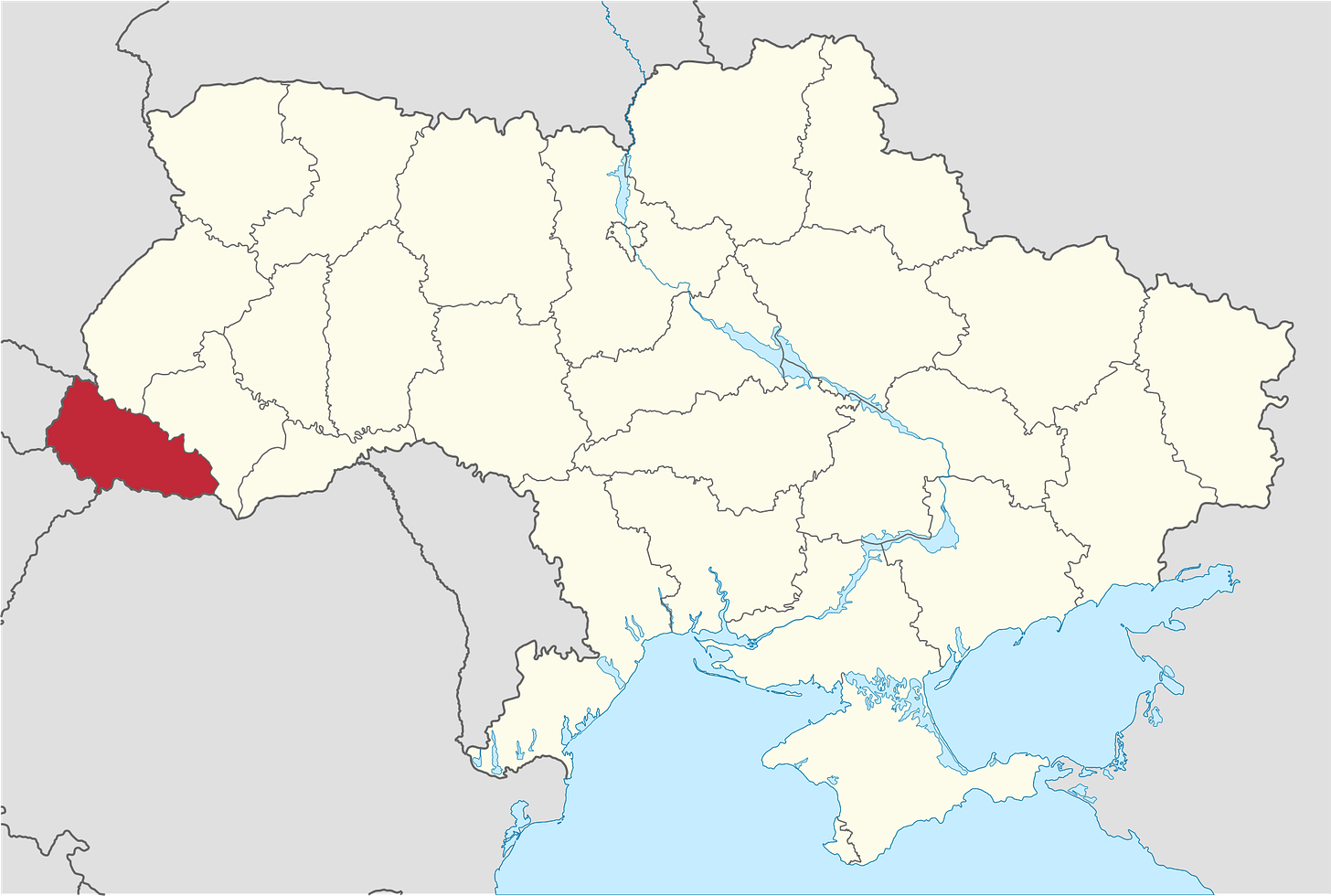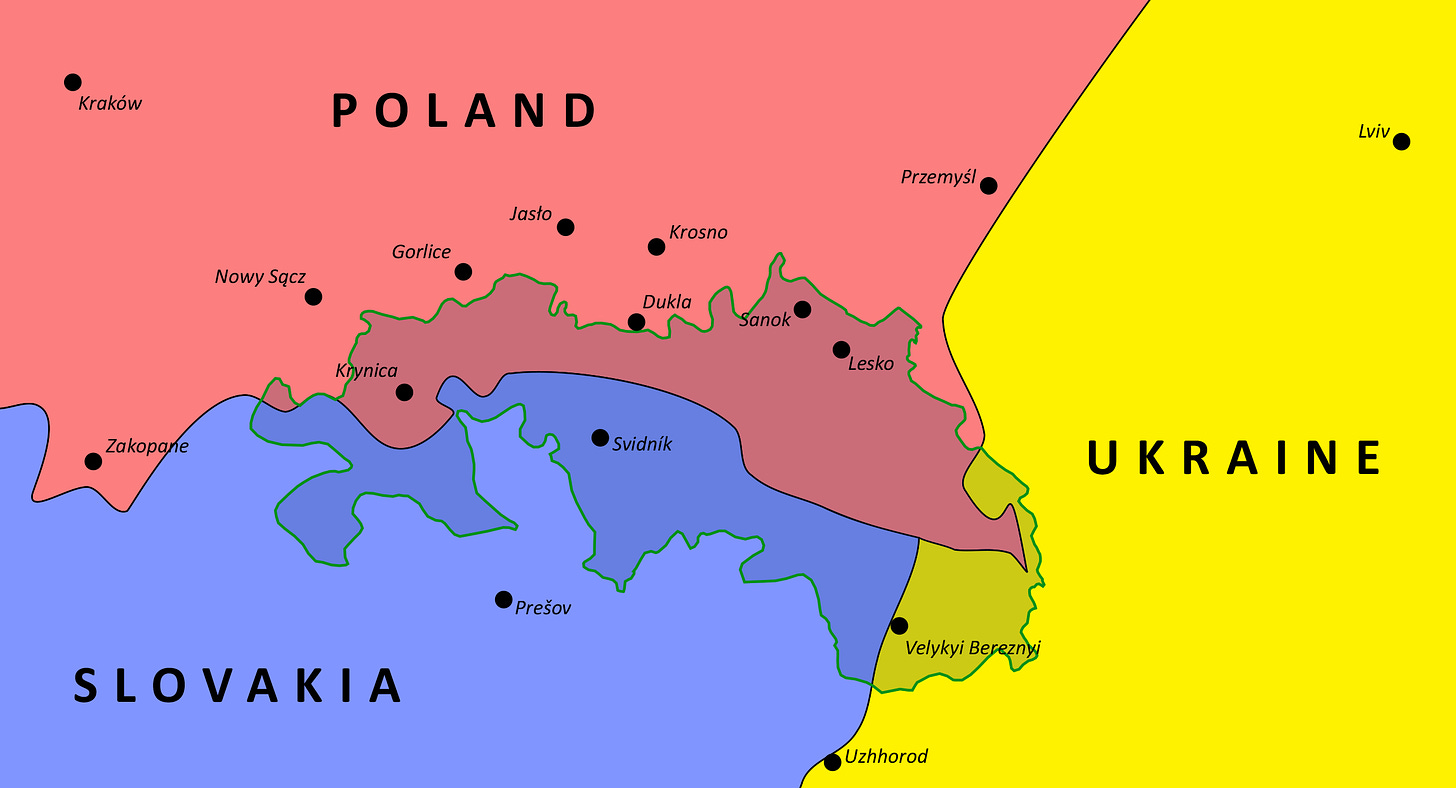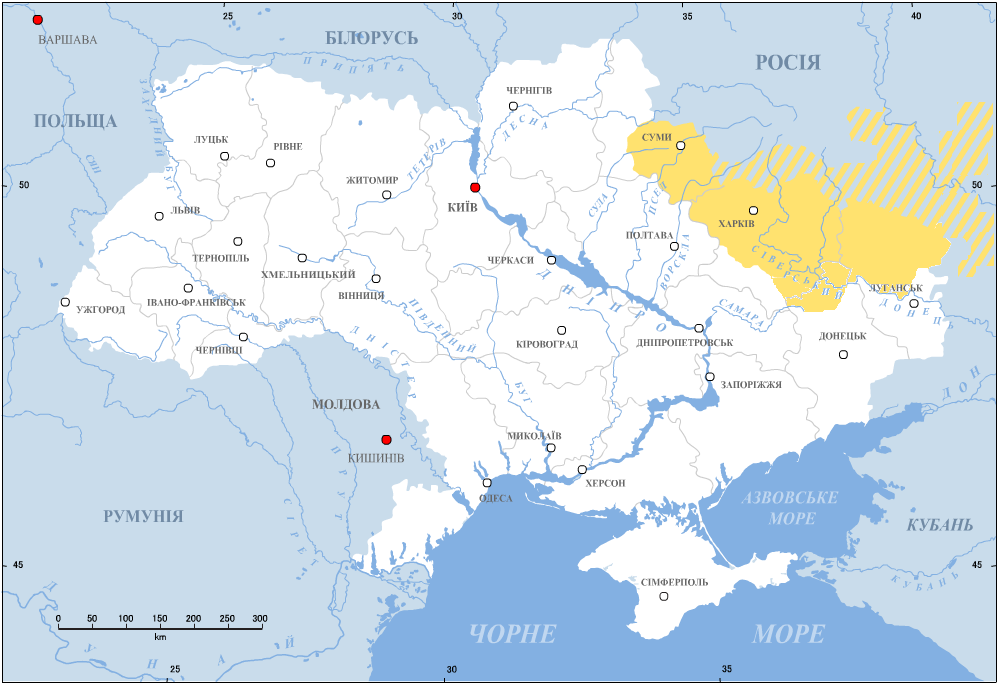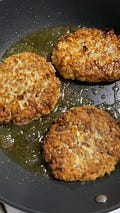If you’re enjoying this newsletter, please consider becoming a paid subscriber. It’s only $24 a year.
Hrechanyky:
I love buckwheat! Yes, I want to scream it from the rooftops. My plan is to post more buckwheat recipes in an effort to show just how versatile and scrumptious this ingredient really is. I hope these recipes lead to more folks cooking and eating buckwheat, or at least incorporating it occasionally into their meals.
Did I mention that buckwheat also happens to be an incredibly nutritious ingredient high in protein and fiber. You can learn more about buckwheat in one of my previous posts.
In my family, we eat buckwheat at least twice a week. It goes with everything. I am serious! In Ukraine, it is commonly served with sautéed mushrooms, roasted vegetables, fried pork, sauerkraut, bacon, fried fish, caramelized onions, liver, sausages, or even hot dog links (sosysʹkyy in Ukrainian). Buckwheat porridge is also a very popular breakfast all over Ukraine. I personally love to serve it with curries or dals in place of rice from time to time. It is also my favorite thing to add to salads to add some fiber and protein.
Buckwheat is a very versatile ingredient and can be found in a multitude of applications across a wide variety of dishes and meals. It is commonly used in fillings. It is especially common in stuffed cabbage, pies, stuffed peppers, stuffed tomatoes, and even as a filling in varenyky, Ukrainian boiled dumplings. I am going to write a whole separate post on the use of buckwheat flour in Ukrainian cooking and baking later this year as well.
What Are Hrechanyky?
Today, I want to talk about a traditional Ukrainian buckwheat dish called hrechanyky. What is it? It’s a type of patty or cutlet, or as I like to call them OG (veggie) burgers. All hrechanyky recipes contain cooked buckwheat, hence the name hrechanyky, Ukrainian word for buckwheat is hrechka or гре́чка. Traditionally there are two main versions, a meat and a meatless version, both traditionally containing mushrooms.

Hrechanyky are especially popular in Lemko Region (Лeмкiвщина in Ukrainian) located on the Polish-Slovak border in Carpathian Mountains in Zakarpattia Oblast (indicated in red in the above image). Hrechanyky are considered a traditional dish of Lemko cuisine. Lemko ethnic group is one of the larger ethnic subgroups of Ukraine or Ukrainian ethnicity.

I recently learned that this dish is also popular in parts of northeastern Ukraine historically referred to as Slobozhanshchyna which is present day Kharkiv, Sumy, Donetsk, and Luhansk Oblasts.

How old is this recipe? The honest answer is that we don’t actually know. Some food writers believe the dish dates as far back as the 11th and 12th century. This date aligns with when buckwheat was first introduced to Ukraine. I need to do some more research before making any sort of claims about the origin of the dish, but I have little doubt that this dish developed and changed over a long period of time and some version of the dish has probably existed for centuries. I will report back once I have some updates. Personally, I find the majority of conversations on “the origins” of dishes pretty problematic, but that’s a story for another time.
It’s also important to mention that the name of the dish, hrechanyky, can refer to several different Ukrainian dishes. For example, hrechanyky in other regions of Ukraine such as Poltava Oblast actually refer to a completely different dish, a type of dumpling made with buckwheat flour. Hrechanyky is also used to refer to buckwheat pancakes and/or a type of buckwheat crepe. Lastly, the name can also refer to yeasted buckwheat buns or fried filled doughnuts made with buckwheat flour. I wanted to mention this since it can be a little confusing when doing research or searching for recipes online or in cookbooks.
Back to our patties. When reading through Ukrainian cookbooks you can find lots of different versions of hrechanyky, some versions with meat and some without. Vegan or vegetarian versions were popular during lent season. Ground meat most commonly used include pork, chicken, turkey, liver, beef, veal or some combination of those. Other ingredients can include eggs, flour or breadcrumbs, onion, mushrooms, boiled buckwheat, garlic, salt, pepper, grated or boiled potato (commonly used in vegetarian versions), and carrots.
The dish can be prepared in a variety of ways. Some are fried, some are stewed, and some are baked. When the dish is stewed or finished in the oven, it is baked in some kind of mushroom, tomato, or sour cream based sauce.
This is definitely rustic cuisine or what the kids are calling peasant food. Hrechanyky are especially popular during times of scarcity since you only need a handful of ingredients to make the dish. I love the nuttiness of the buckwheat, the sweetness of onions, and the savoriness of ground meat or mushrooms in the vegan version.
Today I want to share a fried meat version, I made mine with ground chicken. I love a ratio of 1 part buckwheat and 1 part ground meat (1:1). Using equal parts meat and equal parts buckwheat, gives me a perfect balance of flavors. I invite you to play with the ratios. You can do 3 parts ground meat to 1 part buckwheat. You can do 2 parts ground meat to 1 part buckwheat. You can also add more buckwheat if you want an even more pronounced buckwheat flavor for your version. If you add a higher ratio of buckwheat you might need to increase the amount of egg, since we want to make sure the mixture has enough binding to hold the patty together so that it doesn’t fall apart during cooking.
Think of today’s recipe as a canvas. You can add different spices to your version. You can also add different types of herbs (fresh or dried), garlic, and sour cream for richness to the mixture. This is also a great way to gradually reduce the amount of meat you use or consume.
I will be sharing a fried vegan version with mushrooms and potato and a baked vegetarian version with a creamy sour cream sauce in future posts!
So definitely don’t forget to subscribe. As always let me know if you have any questions!
Enjoy!
RECIPE OF THE WEEK:
Tools:
Large Mixing Bowl
3 large plates
Frying pan
Slotted Spatula or Turner
Ingredient List:
2 tablespoons olive oil
1 onion
500 grams or 1.25 lbs ground, pork, beef, chicken, turkey, lamb etc.
500 grams or 3 cups cooked buckwheat
250 grams dry roasted buckwheat
550 grams water
1 large egg
1 teaspoon salt, or to taste
2 teaspoons fresh ground black pepper, or to taste
100 to 200 grams AP flour
peanut oil for frying
Method:
For the buckwheat: In a saucepan, place 250 grams of buckwheat groats and 550 grams of water. Bring to a boil over high heat, now reduce to low, cover, and cook for 15 minutes. Once all the water has been absorbed, turn off heat, leave on the stove covered for 10 minutes. Set aside and let it come to room temperature.
For the patties: In a large skillet, add 2 tablespoons of oil and heat over medium-low heat. Add onion and cook, lowering heat as needed to avoid scorching, until the onions begin to soften and take on color, about 15 minutes. Remove from heat and let the onion come to room temperature.
To a large mixing bowl, add ground meat, 500 grams of buckwheat, onion, egg, 1 teaspoon salt, and 2 teaspoons freshly ground pepper. Mix until you get a thoroughly combined mixture.
Pro Tip: Take a teaspoon of mixture and cook in a pan or in a microwave to check for seasoning.
We are now ready to shape the patties, let’s set up our station. On the right hand-side of the bowl, place a large plate with flour and a large empty plate. On the left hand-side of the mixing bowl, place a small bowl of water.
Using damp hands, this way the meat mixture won’t stick as bad, shape each portion into an oval shape. Grab anywhere between 100 to 150 grams of meat mixture, between 1/2 to 2/3 cup, using damp hands shape into an oval or round shape, roll the formed patty in flour, and place them onto the large empty plate. Repeat this step with the rest of the mixture.
Pro Tip: Don’t overthink this step! Make them as big or as small as you like!
In a large frying pan or skillet, add enough oil to cover the bottom of the pan. Place as many patties as fit comfortably without crowding. We don’t want to crowd or steam these (you can if you want to!). Fry on both sides for about 3 to 4 minutes or until the internal temperature reads as done for whatever protein you are using.
Pro Tip: If you like a crispier and thinner patty use a spatula to press down on the patty as it’s cooking, think smash burger. If you prefer a thicker and juicier patty, no need to flatten them.
Serve right away, at room temperature, or enjoy cold straight from the fridge. These actually develop a good amount of flavor the longer they sit in the fridge. Easily reheated or can be served cold.
Pro Tip: Ideas for serving—you can serve these with a side of potatoes, on a bun like a burger, with a salad (think Falafel), roasted vegetables, or a side of rice.







Hrechanyky: Ukrainian Buckwheat Burgers